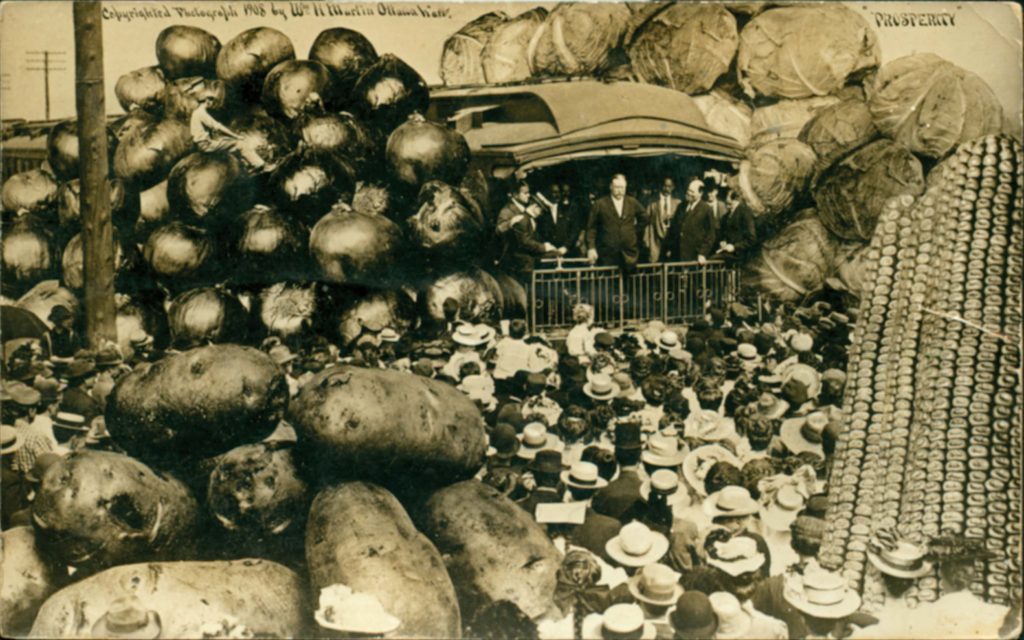By MICHAEL BUSHNELL
Northeast News
October 5, 2016
William H. “Dad” Martin of Ottawa, Kan., is considered to be the father of the exaggerated real photo postcard. Some of his better work featured giant ears of corn, huge apples and peaches, stalks of wheat taller than any man, and as shown here in this circa 1908 image titled “Prosperity,” giant potatoes, onions corn and cabbage heaped up around a full size passenger rail car. Standing on the back of the rail car is President Theodore Roosevelt addressing a group of people.
Such cards were wildly popular throughout the Midwest where agriculture was the lifeblood. W.H. Martin moved to Ottawa in 1900 to serve as an apprentice to local photographer E. H. Corwin. Eight years later, Martin purchased Corwin’s studio and began crafting tall tale postcards that would eventually make him a millionaire. The exaggerated image is achieved by the photographer taking two images of his subject, one a wide shot and the other a close-up image. The close up image would then be enlarged, placed over the wide angle shot and glued down. It was then shot again in the dark room, permanently fusing the images and creating the new image.
At the zenith of its short, four-year existence, Martin Postcard Company reportedly produced more than 7 million exaggerated, real photo postcards. Martin’s cards were so popular and so well done, other card companies often stamped their own brand on the back and sold them as their own. Although there is no publisher’s mark on the back of this card, it is a Martin original. Martin also owned North American Postcard Company here in Kansas City. North American is widely known for producing some of the best real photo postcards of Kansas City and its residents. Some North American Postcard Company cards can fetch prices in today’s market as high as $150-$200 for rare images.
The message on the reverse of the card reads, “One of the girls here at this house is very sick and has to keep so quiet it sure makes us feel lonesome. Two other girls left for home yesterday. Hope spring is soon to be here. Write soon. Dear Ray, What makes you send us such weather down here. I did not even get to wear my new Easter bonnet last Sabbath. What are you doing these winter days? Gertrude.” The card was sent to Mr. Ray O’Hara of Miltonvale, Kan., on March 3, 1913.
Real photos are real exaggerations
Related Posts
Family Flower Business, a Staple of Northeast Community
Michael Bushnell Contributing Historian Rose Marie Serrone opened her flower and gift shop in a single story, Art Deco-style building in 1946 located at 2659 Independence Blvd. Rose Marie’s Floral…
Ice Wagons Once a Staple of Daily Neighborhood Life
Michael Bushnell Contributing Historian Seventeen carloads of 8-inch ice, direct from the Nemaha River near Lincoln, Nebraska were received in this city on Sunday last by the K.C. & Wyandotte…




















